Ever since commentor Cece suggested I do a passion fruit review post last December, I’ve been slowly collecting and trying passion fruit in all its various forms. (And some granadilla, too, another tropical fruit which often gets confused with passion fruit.) Now I can finally post my comprehensive review and taste test results. See, I do get around to doing everything I say I will… sometimes it just takes a while! In this post, I’ll be providing comparisons between fresh fruit, frozen passion fruit puree, dried whole passion fruit, and and dried powder.

Fresh Fruit
Passion fruits have to be shipped a long way to get to Canada, several parallels north of Brazil where they are native. Another wild fact I learned was that a lot of fruit sold as “passion fruit” in Canadian grocery stores is actually sweet granadilla. These two fruits are in the same genus (Passiflora) so they are closely related, but not the same thing at all.
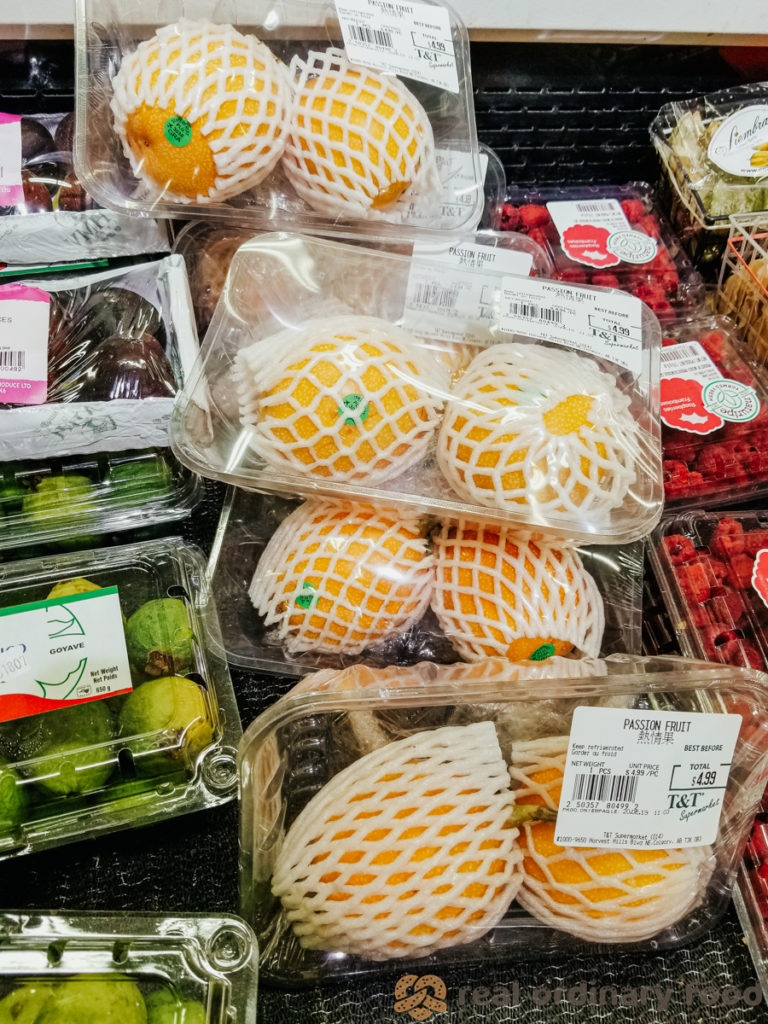
The taste and texture of passion fruit and granadilla are very similar. The most noticeable difference comes from their outer appearance. Passion fruit are smaller, and they start with a green skin that ripen into a dark reddish-purple. The skin of the granadilla is yellow tinged with orange. The pulp colour varies as well—passion fruit have bright orange pulp, and granadillas have an translucent, colourless pulp.
The insides of these fruits are perhaps the most interesting part. The juices and seeds ooze out like a runny chia pudding when sliced into. That thick, slimy texture is fascinating! Throughout the pulp, both fruits are studded with edible seeds. They are large and grey-coloured in the granadilla, while the passion fruit has smaller, black seeds. Some people like their crunch, and I do appreciate them in other recipes, such as this passion fruit butter or in dried passion fruit as you’ll see below. But in fresh passion fruit that is eaten on its own, I feel like it disrupts the lovely texture of the fruit’s flesh.
Also, because its shell is so thick, you don’t end up with a lot of yield per fruit. It turns out that the peels are an issue for scientists too, who are coming up with various ways to reduce their waste, from turning them into flours that can substitute for xanthan gum or extracting pectin to use for jellies and jams. Next time I have fresh passion fruit on hand I’m going to try the flour-making technique to see if I can get something useful out of the shells.


Okay, let’s taste it. Well, it’s tropical for sure. Sweet granadilla, living up to the name, are the sweeter of the two. Depending on how ripe it is when you crack it open, the flavour can range from super tangy to overwhelmingly sweet. Passion fruit, on the other hand, is going to be a little sour no matter how ripe it is. In both fruits there is a tropical hint, reminiscent of the smell of guava or papaya. (This makes sense, since these fruits share similar chemical compounds that cause their odor, including ethyl butyrate.)
As my tongue has a bias against overly acidic flavours, I prefer the granadilla, which tastes great eaten on its own or used in a fruity recipe. In fact, it’s not just me. Passion fruit isn’t usually eaten straight because of how sour it tastes. It is very popular in drinks and desserts though, because that’s where its tanginess can really shine—by providing the sour note to an otherwise sweet or creamy goodie.
Recommended for: snacking, smoothies
How to Tell If Your Fruit Is Ripe
The answer to this question depends on whether you’ve got a passion fruit or a granadilla on your hands. If you have a passion fruit, wait until the skin becomes soft, dark, and wrinkly.


This is not the case for granadilla.
Below is an image of two granadilla fruits I purchased on the same day. I waited an entire month before cutting them open and tasting. The one on the left turned a dark splotchy colour, while the one on the right still looked exactly as it did thirty days ago. Weird, since they both looked the same when I bought them. Importantly, although the darker one had shrunk in size and weighed a lot lighter than the brighter one, both of them still had smooth, hard-textured skin.
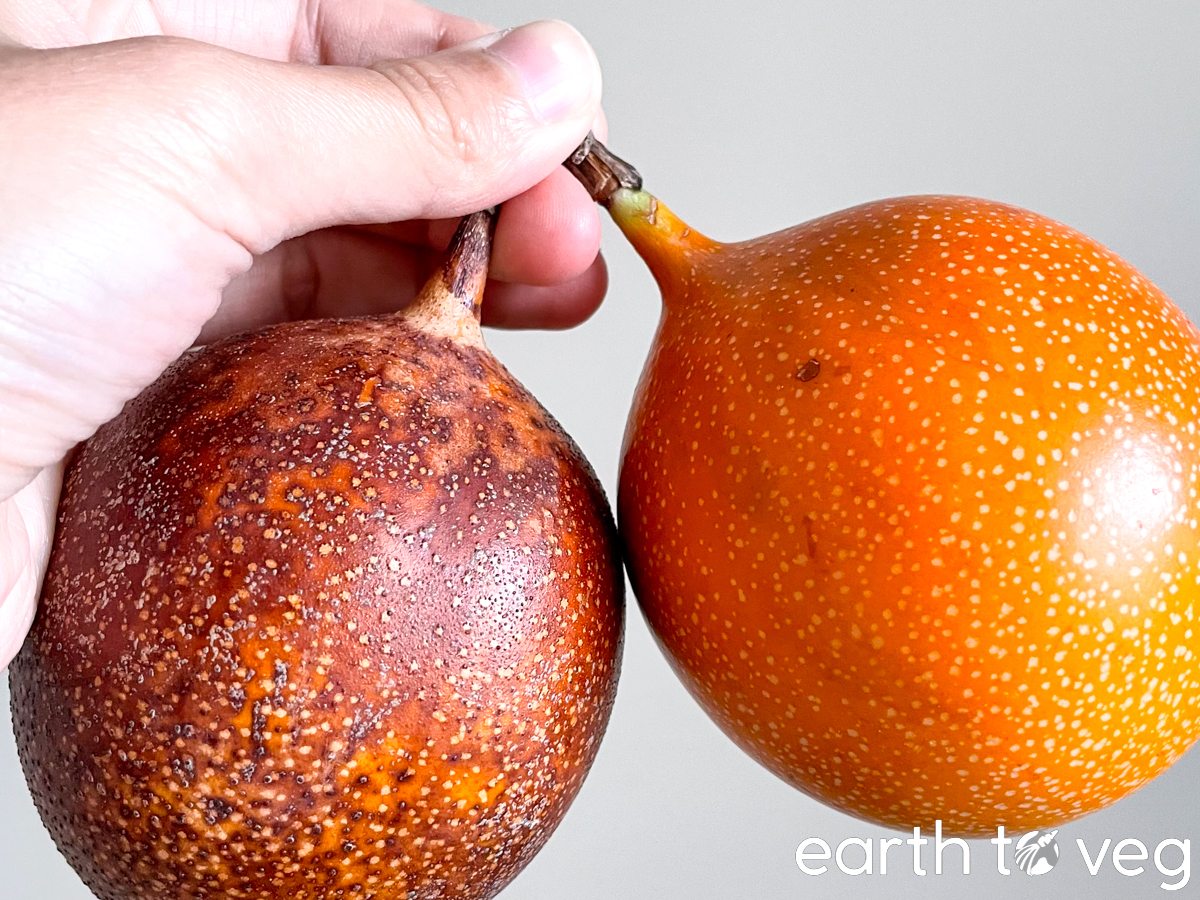

After cutting it open, I could immediately see (and smell) the difference. The darker one had obviously gone off and was really drying out. It had a sour smell—not the type of tangy, fruity, type of sour, but more like the sourness of food gone off. The one on the right, meanwhile, was still nice and gelatinous, a little bit runny, and perfectly sweet.
I did a second experiment where I left a granadilla to ripen until it just began to darken in colour. It turned out that even the smallest change in colour spelled doom for the fruit. The pulp inside looked a bit dried-out, it didn’t smell fresh anymore, and I wasn’t comfortable eating it. So my advice for ripening granadilla? Let it sit for a couple of weeks on your counter. Don’t let it turn brown; it should look the same as when you bought it. It should be plenty sweet in two weeks’ time.
Frozen Puree
These frozen cubes are made of 100% passion fruit puree, seeds and all. I found it in the frozen Filipino food section of T&T between all the ubes, cassavas, and pandan leaves. This stuff actually tastes very similar to fresh fruit and is just as sour as the real thing. I recommend buying this over fresh if you’re using it for any cooking purpose, because it’s much more convenient to use. I prefer it for my passion fruit butter recipe. It’s a lot faster than cutting and scooping out 350 g worth of passion fruit insides!
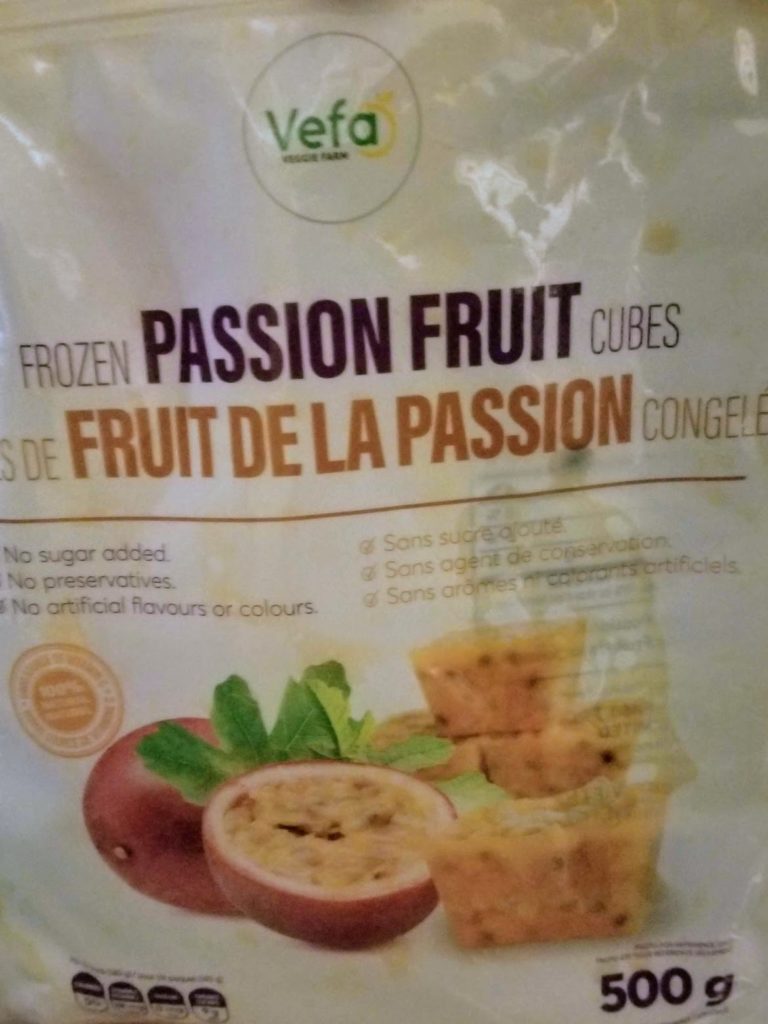

Recommended for: baking, jams/jellies
Dried, Whole
Another T&T find. I bought this at the Richmond T&T and I was very excited because this was an item I haven’t seen at either the Calgary or Waterloo stores!


The smell of this passion fruit “jerky” is not great. Reminds me of prunes. They also taste… a bit like prunes? I mean, no matter how hard a dried fruit tries to retain its flavour, you just can’t get back the fresh, tropical taste which is one thing that passion fruit really has going for it.

However, I did enjoy biting into the seeds. They provided a great contrast to the gummy dried fruit. Another thing I appreciate is that unlike the fresh passion fruit, these were not so sour. Yayyy! But it’s likely because this brand of dried fruit contains added sugar. Booo!
The texture is less chewy than many other dried fruits, like dates or apricots, which makes it less fun to eat in my opinion. One thing I like about eating dried fruits is how bouncy the texture is, and these weren’t so bouncy.
They were okay, but I wouldn’t buy again.
Recommended for: snacking
Dried, Powder
I found this powdered version of passion fruit at Vancouver’s Gourmet Warehouse. It sat in the pantry for a long time because I couldn’t figure out what to do with it. It’s a very small package so I didn’t want to squander it on something that didn’t turn out well.
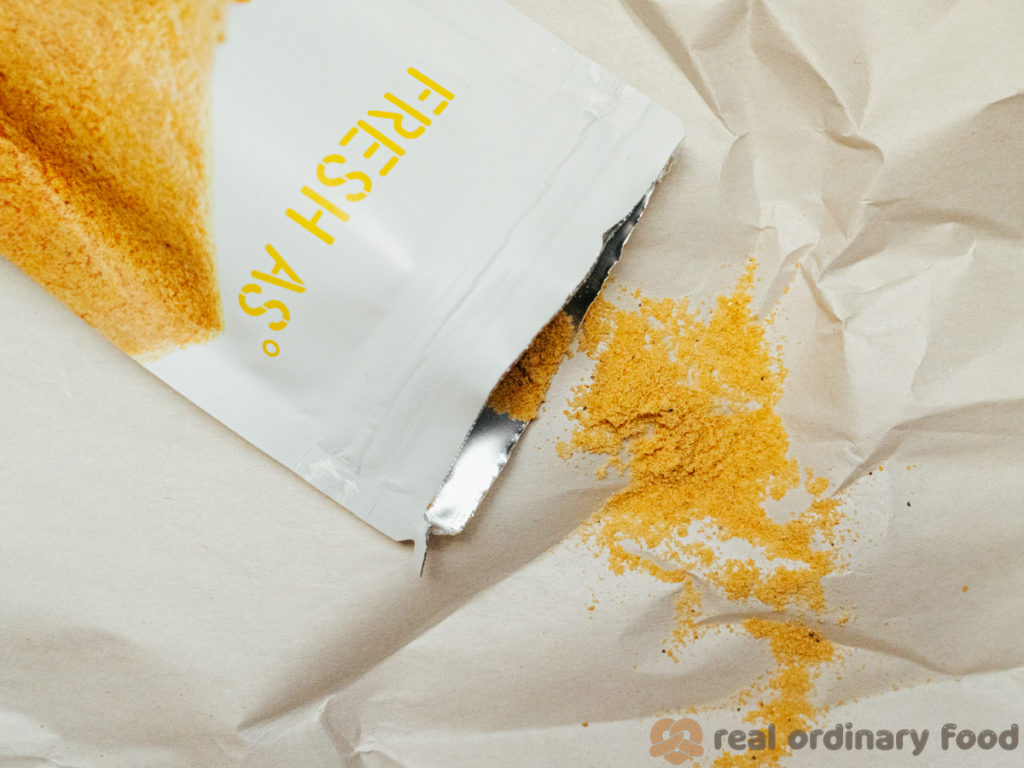
I eventually decided to try putting some in a smoothie to see how it compared to a smoothie made with frozen passion fruit puree. The results were very favourable. For one thing, this powdered version doesn’t contain seeds so it blends up much smoother than the one made with puree, which had a little grittiness.
I also tried a little of the powder on its own. I actually like it a lot. It tastes similar to the real thing—much more passiony fruity than the dried jerky version. I think this would be the best for smoothies because it removes the grittiness from the ground-up seeds.
Recommended for: smoothies, dusting on top of baked goods
Complementary Foods and Flavours
Wondering how to add passion fruit into a smoothie or shake? According to The Baker’s Almanac, passion fruit pairs well with bananas, coconuts, kiwis, lemons, limes, mangoes, oranges, papayas, peaches, pears, pineapples, and strawberries. In short, anything tropical or citrusy is a good bet. I recently whipped one up that was just frozen pineapple and passion fruit powder with a bit of ground ginger. I will update you guys with other passion fruit recipe ideas as I continue to experiment.
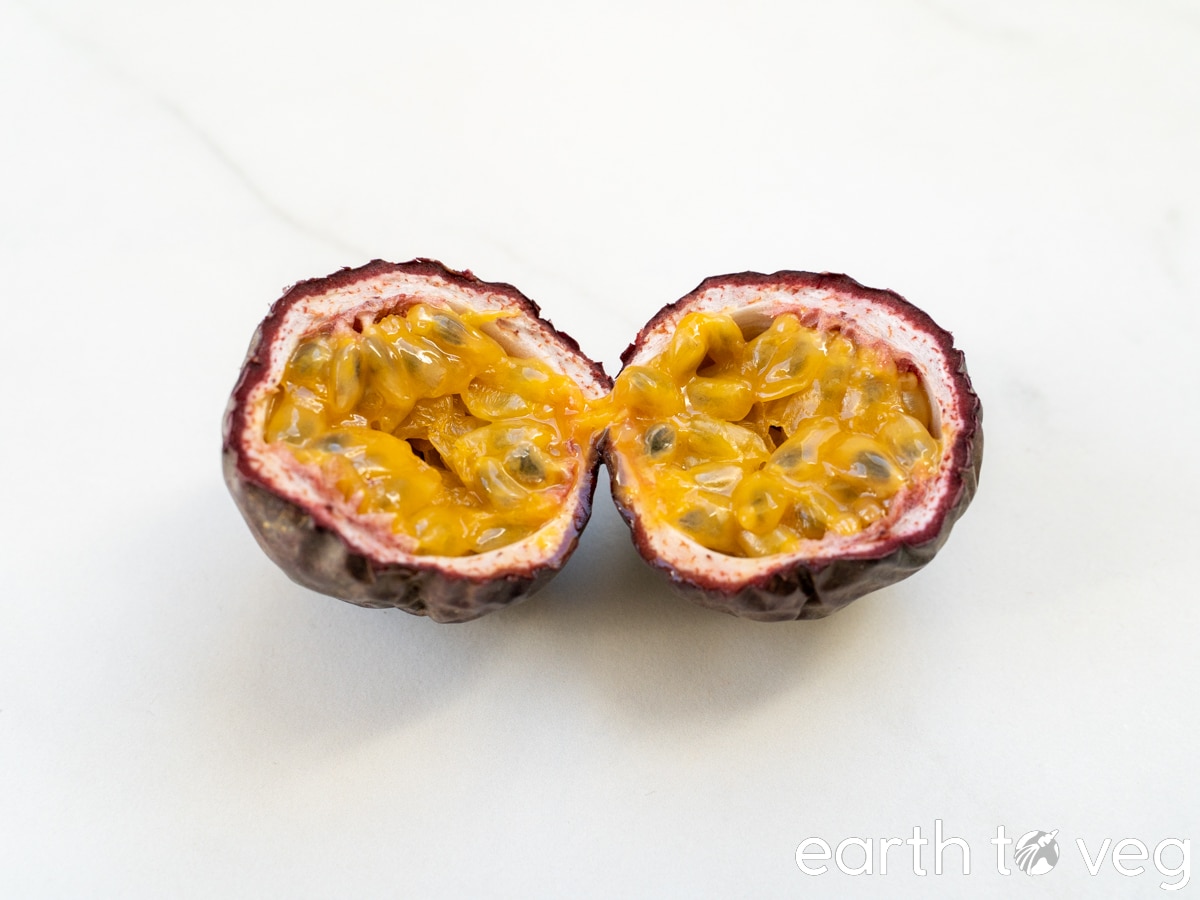
What Should We Try Next?
Well folks, nearly half a year after it was first requested, I’ve finally finished my passion fruit review! So what do you think about passion fruit? How does it rank on your fruit tier list? And let me know if you have an interesting food you’d like me to review; I will try my best to get my hands on it and give it a try!

When making a recipe calling for fresh PF pulp, how much PF powder would you use as a substitute?
I would substitute 2 tsp of passion fruit powder for 1 fresh passion fruit (~2 tbsp pulp).
Hi, it’s a good thing to gain knowledge and thanks for your consistent 😊.
Keep up and God increase your life.
I enjoyed your post and reviews.thanks
I’m glad to hear that Marisol!